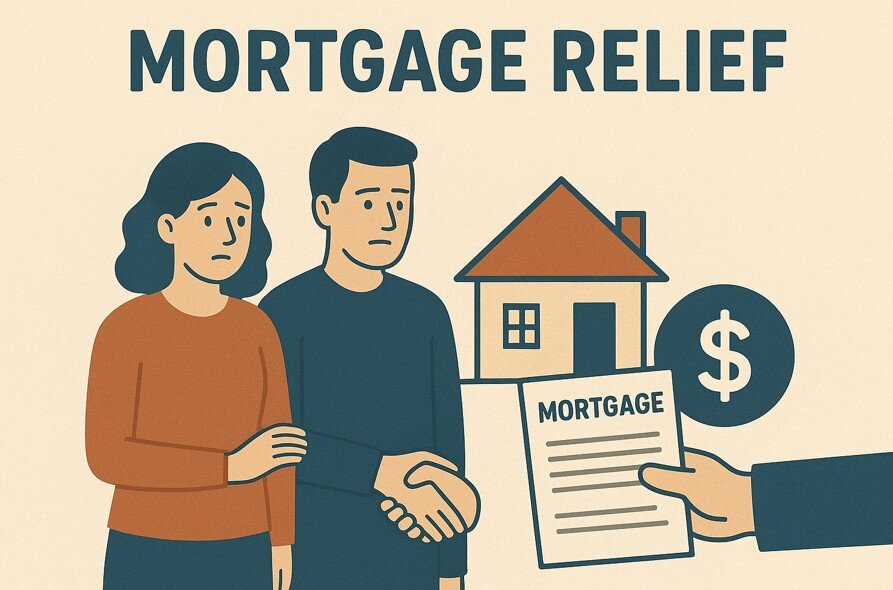
What Is Mortgage Relief?
Mortgage relief refers to a set of programs and options designed to help homeowners who are struggling to make their mortgage payments. Relief options can include loan modifications, forbearance, refinancing, or even financial assistance to prevent foreclosure. These programs aim to make mortgage payments more manageable, especially during times of hardship such as job loss, medical emergencies, or economic downturns.
Why Texas Homeowners May Need Mortgage Assistance
Texas homeowners face a range of financial pressures—from rising property taxes to inflation and unexpected job losses. Natural disasters like hurricanes or economic disruptions (such as the COVID-19 pandemic) have also increased the need for mortgage support. Without timely help, many homeowners risk falling behind on payments and facing foreclosure.
Types of Mortgage Relief Programs Available in Texas
Loan Modification Programs
Loan modification involves permanently changing the terms of your mortgage to reduce monthly payments. This may include lowering the interest rate, extending the loan term, or rolling missed payments into the loan balance. It’s one of the most common forms of mortgage relief.
Forbearance Options
Forbearance allows homeowners to pause or reduce their mortgage payments temporarily, usually during a financial crisis. While it doesn’t erase the debt, it provides breathing room until you can resume full payments.
Refinancing Programs
Refinancing replaces your existing loan with a new one, ideally with a lower interest rate or longer term. This can reduce monthly payments, but you’ll need a reasonable credit score and home equity to qualify.
Principal Reduction Options
In rare cases, lenders may agree to reduce the total amount owed on your mortgage, especially if the home’s market value has significantly dropped. Principal reduction is less common but can be available in certain hardship cases.
Government Mortgage Relief Programs in Texas
Texas Homeowner Assistance Fund (TXHAF)
TXHAF provides financial assistance to eligible Texas homeowners for mortgage payments, property taxes, and related housing costs. Funded by the American Rescue Plan Act, TXHAF is specifically designed to prevent foreclosure and housing instability.
Federal Homeowner Assistance Programs (HAF)
The federal Homeowner Assistance Fund (HAF) supports state-level programs like TXHAF. It offers grants and assistance for past-due mortgage payments and other housing-related expenses, focusing on homeowners impacted by COVID-19.
HUD Resources for Texas Residents
The U.S. Department of Housing and Urban Development (HUD) offers several relief tools, including housing counseling services, FHA loan forbearance options, and direct assistance through approved nonprofit partners in Texas.
Private Lender and Bank-Based Relief Options
Many banks and mortgage servicers offer in-house relief programs. These can include temporary payment reductions, deferrals, or customized loan modifications. It’s crucial to contact your lender early—before missing a payment—to explore available options.
Who Qualifies for Mortgage Relief in Texas?
Eligibility varies by program, but common criteria include:
- Demonstrated financial hardship (e.g., job loss, medical bills)
- Being behind on mortgage payments or at risk of default
- Ownership and occupancy of the home as your primary residence
- Income limits (especially for government programs)
Programs like TXHAF may also require documentation showing pandemic-related income loss or increased expenses.
How to Apply for Mortgage Assistance in Texas
Documents You’ll Need
When applying, be ready to provide:
- Proof of income (pay stubs, tax returns)
- Mortgage statements
- Bank statements
- Hardship letter explaining your situation
- Identification documents
Where to Apply
You can apply through:
- The Texas Homeowner Assistance Fund portal
- Your mortgage servicer or bank
- HUD-approved housing counselors
- Local non-profits offering housing support
What to Expect During the Process
Once you apply:
- Your application will be reviewed for eligibility
- You may be asked for additional documentation
- Processing times vary—some relief may be granted within a few weeks, while others take longer
- If approved, payments may be sent directly to your lender or applied to your account
Tips to Avoid Foreclosure in Texas
- Act early: Don’t wait until you’ve missed multiple payments.
- Communicate: Contact your lender as soon as hardship arises.
- Seek help: Use HUD-approved housing counselors or nonprofit organizations.
- Know your rights: Texas has specific foreclosure timelines—know them to protect your home.
Frequently Asked Questions About Texas Mortgage Relief
What if I’ve already missed mortgage payments?
Missing one or more payments doesn’t mean you’ve lost your home. Many relief programs are specifically designed for people in this situation.
Can I still get help if I’m unemployed?
Yes. Unemployment is a valid hardship under most relief programs. You’ll likely need to show you’re actively seeking work or demonstrate a plan to regain financial stability.
Will mortgage relief affect my credit?
Some forms, like forbearance under federal programs, do not negatively impact your credit. However, missing payments without an official agreement can hurt your score. Always confirm with your lender.
How long does mortgage assistance take to process?
Processing times vary. State and federal programs may take several weeks, while private lender programs may respond faster. Apply early and follow up regularly.
Is mortgage relief the same as refinancing?
No. Mortgage relief modifies your existing loan terms or offers temporary help. Refinancing creates a new loan. Each option has its own eligibility and benefits.
Final Thoughts: Getting the Help You Need
Mortgage relief programs in Texas are here to help homeowners keep their homes and regain financial stability. Whether you’re facing temporary hardship or long-term income loss, resources are available—from state-run funds to federal programs and private lender assistance.Don’t wait until you’re overwhelmed. Reach out, explore your options, and get the help you need to protect your home.